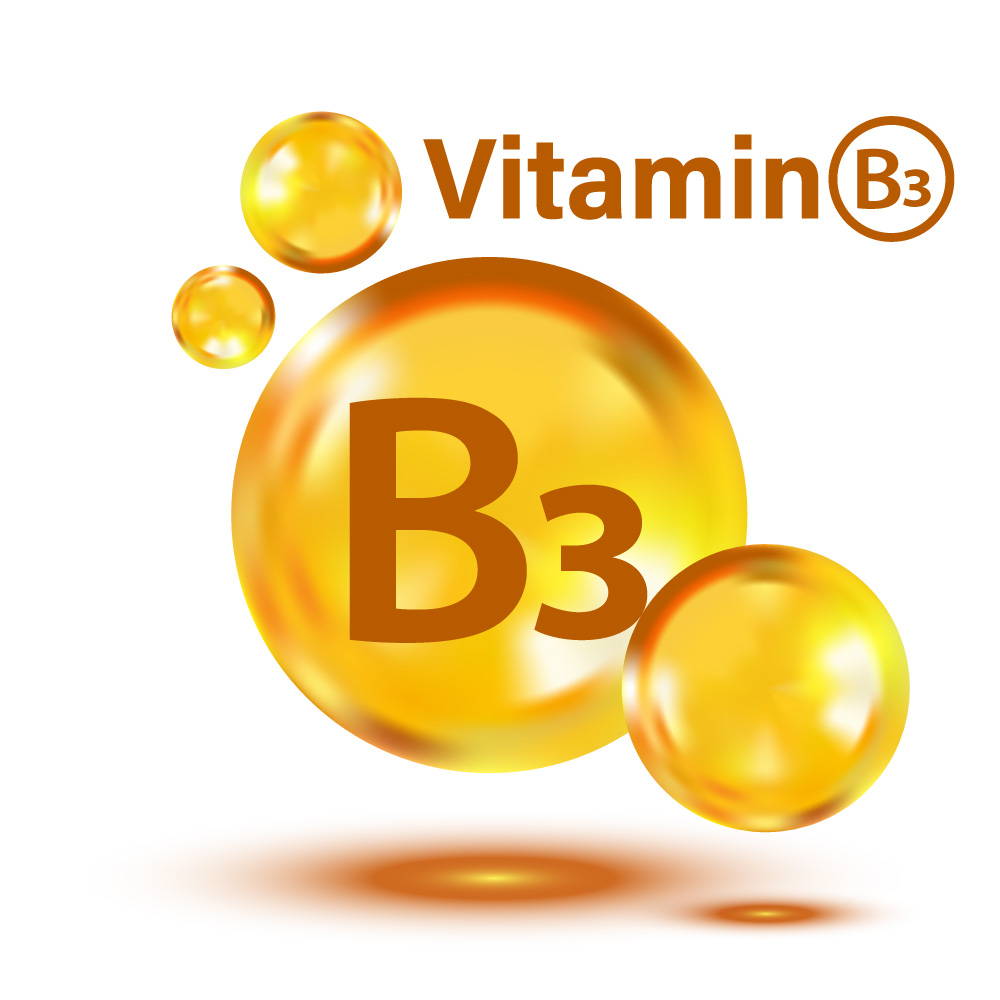SUPPLEMENT - VITAMIN
Explore our effective micro-nutrients and premium ingredients

What is Niacin and what does it do?
How much Niacin do I need?
LifeStage | RecommendedAmount |
Birth to 6 months | 2 mg |
Infants 7–12 months | 4 mg NE |
Children 1–3 years | 6 mg NE |
Children 4–8 years | 8 mg NE |
Children 9–13 years | 12 mg NE |
Teen boys 14–18 years | 16 mg NE |
Teen girls 14–18 years | 14 mg NE |
Adult men 19+ years | 16 mg NE |
Adult women 19+ years | 14 mg NE |
Pregnant teens and women | 18 mg NE |
Breastfeeding teens and women | 17 mg NE |
What happens if I don’t get enough Niacin?
¡ Rough skin that turns red or brown in the sun
¡ A bright red tongue
¡ Vomiting, constipation, or diarrhea
¡ Depression
¡ Headaches
¡ Extreme tiredness
¡ Aggressive, paranoid, or suicidal behavior
¡ Hallucinations, apathy, loss of memory
What are some effects of Niacin on health?
Cardiovascular disease
Can Niacin be harmful?
¡ Low blood pressure (which can increase the risk of falls)
¡ Extreme tiredness
¡ High blood sugar levels
¡ Nausea, heartburn, and abdominal pain
¡ Blurred or impaired vision and fluid buildup in the eyes
Ages | UpperLimit |
Birth to 12 months | Not established |
Children 1–3 years | 10 mg |
Children 4–8 years | 15 mg |
Children 9–13 years | 20 mg |
Teens 14–18 years | 30 mg |
Adults 19+ years | 35 mg |
Where can I find out more about Niacin?
References
2. Institute of Medicine. Food andNutrition Board. Dietary Reference Intakes: Thiamin, Riboflavin, Niacin,Vitamin B6, Folate, Vitamin B12, Pantothenic Acid, Biotin, and Choline.Washington, DC: National Academy Press, 1998.
3. Kirkland JB. Niacin. In: RossAC, Caballero B, Cousins RJ, Tucker KL, Ziegler TR, eds. Modern Nutrition inHealth and Disease, 11th ed. Baltimore, MD: Williams & Wilkins;2014:331-40.
4. Bourgeois C, Moss J. Niacin.In: Coates PM, Betz JM, Blackman MR, Cragg GM, Levine M, Moss J, White JD, eds.Encyclopedia of Dietary Supplements, 2nd ed. New York, NY: Informa Healthcare;2010:562-9
5. Health information data fromU.S. National Institutes of Health
Better than others
Nine medical doctors used their research findings to develop Dr’s Grow UP in the biotech lab. The result is a product containing 22 ingredients mixed in the perfect proportions to maximize bone health and height development.
Why Bone Science?
Science-Backed Formulations
Carrying out extensive research and keeping up-to-date with the latest scientific findings is our key to develop superior formulations.
Best Growth Support for Kids & Teenagers
Our products contain essential ingredients for a healthy bone and height development of kids from 10 years and teenagers.
Fighting Aging Effects
We are dedicated to create formulations that delay and restrict the extent of adult’s bone density decrease.
Unmatched Product Quality
Only 100% natural ingredients that contain no soy, no gluten, no GMOs, no maltodextrin, and no artificial flavors, colors, or preservatives.
Product Safety
All of our products are manufactured in the US in an FDA and NSF cGMP registered facility.
